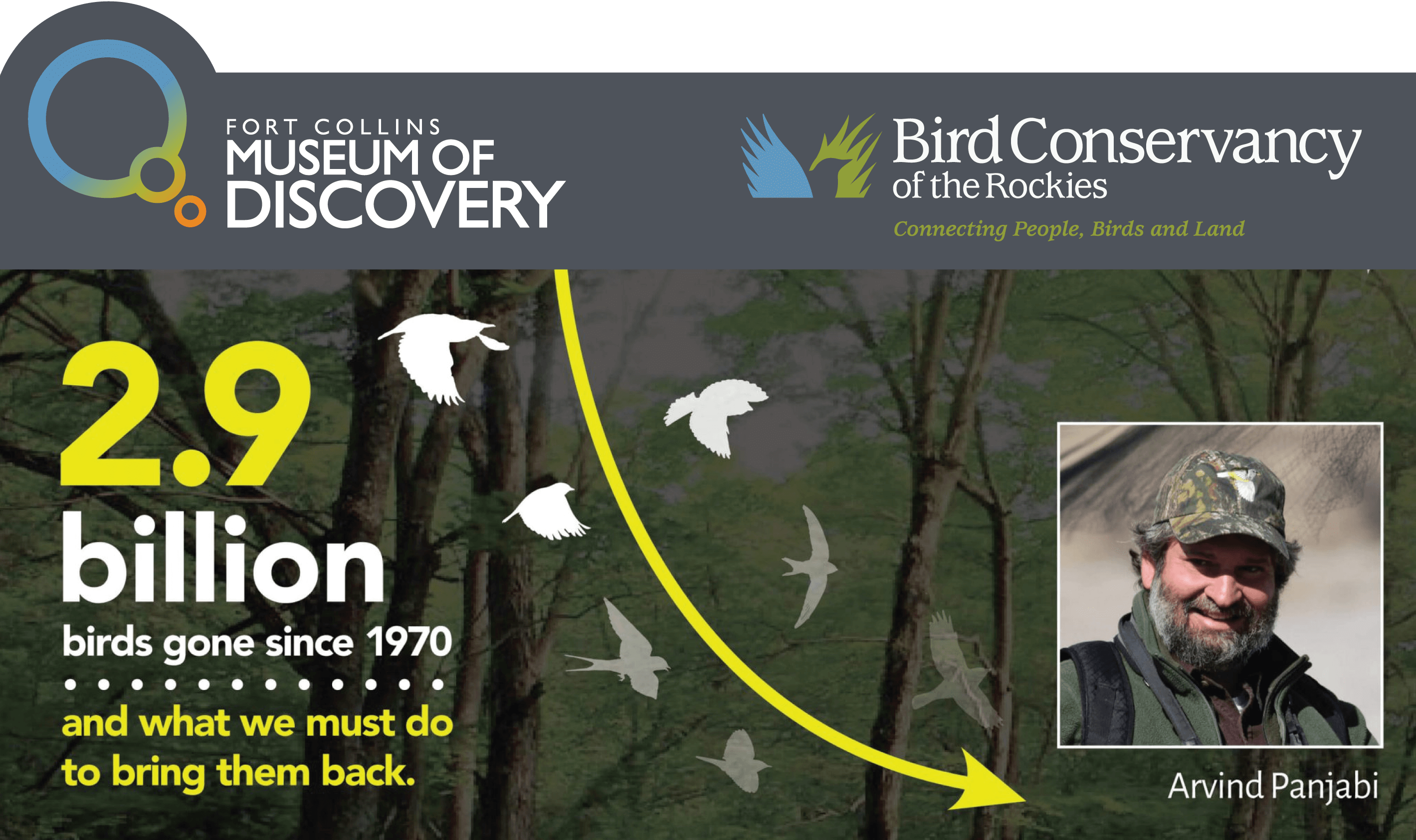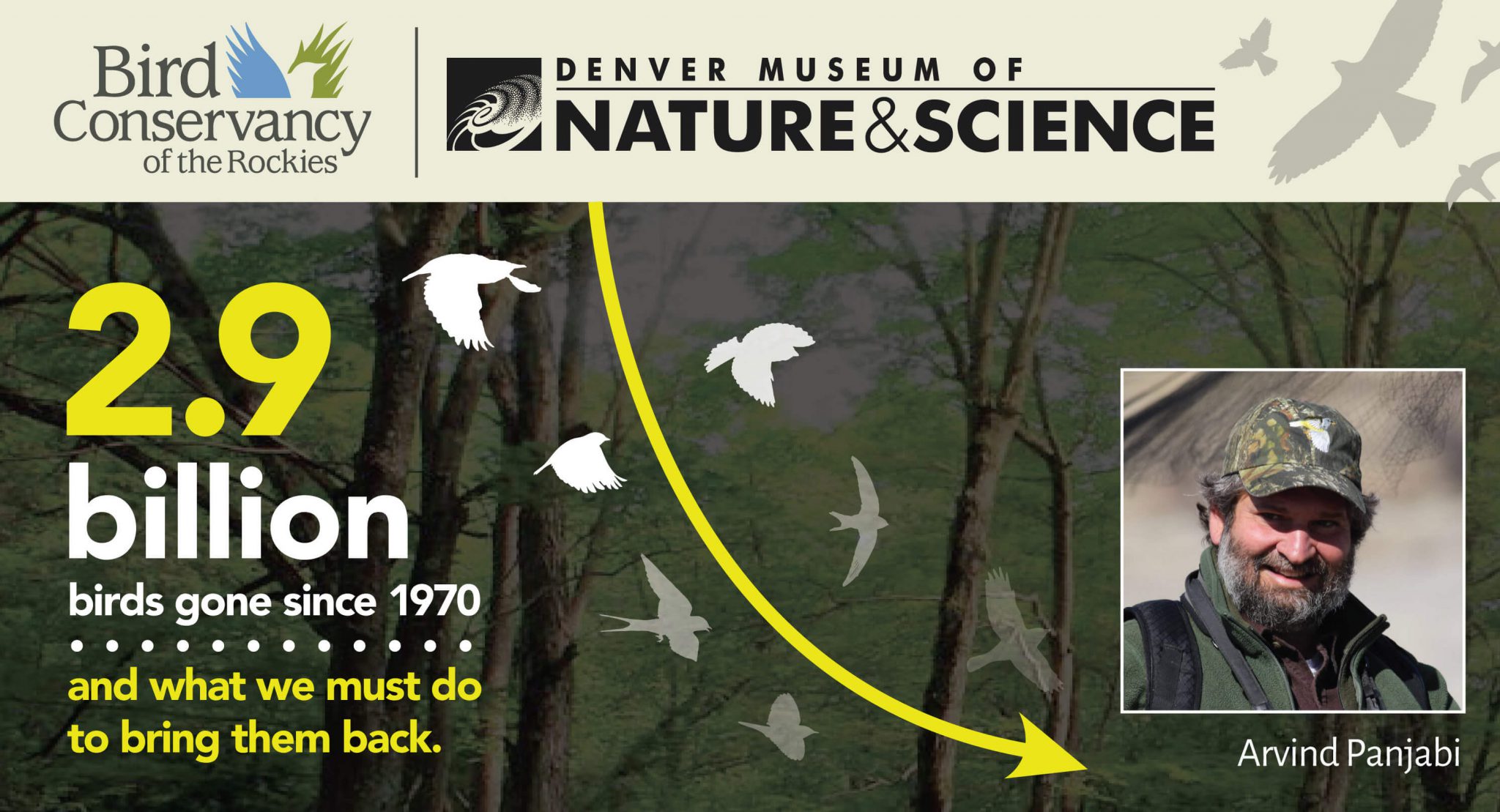Forest management has evolved rapidly over the last two decades as land managers strive to find a balance between wildlife habitat needs, resource utilization, fire mitigation, and resilience to climate change. Using birds as indicators, Bird Conservancy and partners explored the impacts of the Collaborative Forest Landscape Restoration Program and how modern forest management approaches are shaping avian biodiversity in treated landscapes.
Recent extensive bark beetle outbreaks have raised concerns about the health of western conifer forests and their capacity to support wildlife species. These tiny bugs bring big changes, transforming forests and re-shaping landscape ecology in extreme ways and on a grand scale. We surveyed birds in Colorado, gathering data to compare unimpacted forests with those following a beetle outbreak. What we found may surprise you!
Little is known about grassland birds during migration. Automated radio telemetry through the Motus Wildlife Tracking System can help us understand bird movement during this part of their life cycle. Bird Conservancy of the Rockies is implementing a three-phase, multiyear project to expand the Motus network into the Great Plains and Chihuahuan Desert, installing receiving stations along avian flyways to capture vital data and fill knowledge gaps.
Grassland bird populations are declining and the majority of species are understudied on their wintering grounds. In the winter of 2020, we implemented a regional monitoring program in the Chihuahuan Desert of Texas to establish baseline population estimates of grassland birds. We surveyed on a number of expansive cattle ranches, each exhibiting fascinating ecological and management histories. Through the implementation of this program, we can share that collaboration between ranching operations and grassland bird conservation is mutually beneficial.
Around 200 pairs of Bald Eagles call Colorado home, with most breeding pairs remaining in the state year-round, rearing their young here in the spring and summer. Why, then, does Colorado’s Bald Eagle population surge to well over 1000 birds in the late fall and winter? Migration is the obvious answer, but as you might suspect, it’s a bit more complicated than that. Why do some eagles migrate while others do not? Here we’ll explore the answer to that question and more.

Bird Conservancy’s avian conservation scientist, Arvind Panjabi, presents his insights as co-author of a recent Science article based on decades of research documenting the loss of nearly 3 billion birds in N.America and what it means for birds in Colorado and across North America.

Bird Conservancy’s avian conservation scientist, Arvind Panjabi, presents his insights as co-author of a recent Science article based on decades of research documenting the loss of nearly 3 billion birds in N.America and what it means for birds in Colorado and across North America.
Bird Conservancy of the Rockies finished 2019 among friends and with binoculars in hand at Birds of Winter Camps and a successful Audubon Christmas Bird Count. Stacey and Tyler from our Education team share stories from the adventures, many of which are sure to provide lasting memories in the minds of participants.
The Sprague’s Pipit is a charismatic songbird of North American grasslands. If you’ve ever wandered the Northern Great Plains in summer, you’ve probably heard their sweet song, and maybe even seen their high-altitude aerial displays which can last for hours. One of many fast-declining grassland bird species, we’re urgently working to learn more about the life cycle of the Sprague’s Pipit so that its song can continue to be enjoyed for generations to come.
Since 1970, less than a single lifetime, North America has lost more than one in four of its birds, according to a report in the world’s leading scientific journal. New findings just published in the journal Science confirm staggering losses among birds. Based on nearly 50 years of data, this research for the first time quantifies a long-developing but overlooked ecological crisis.


